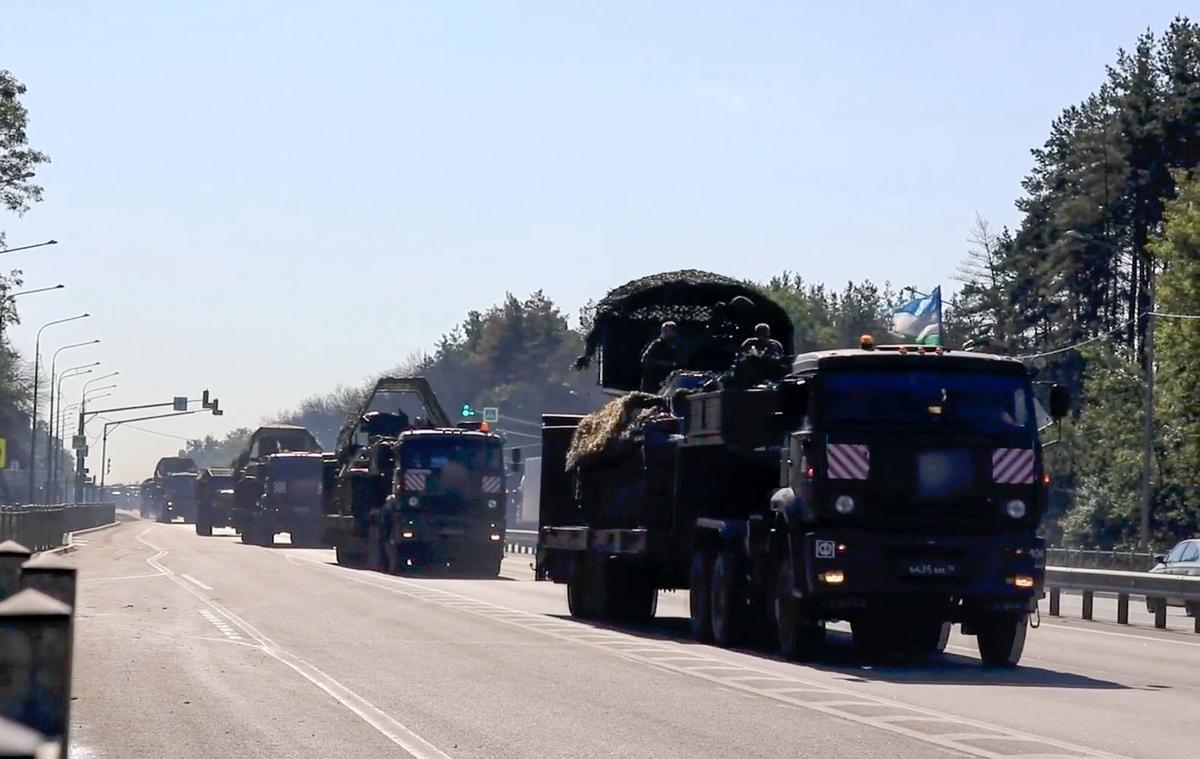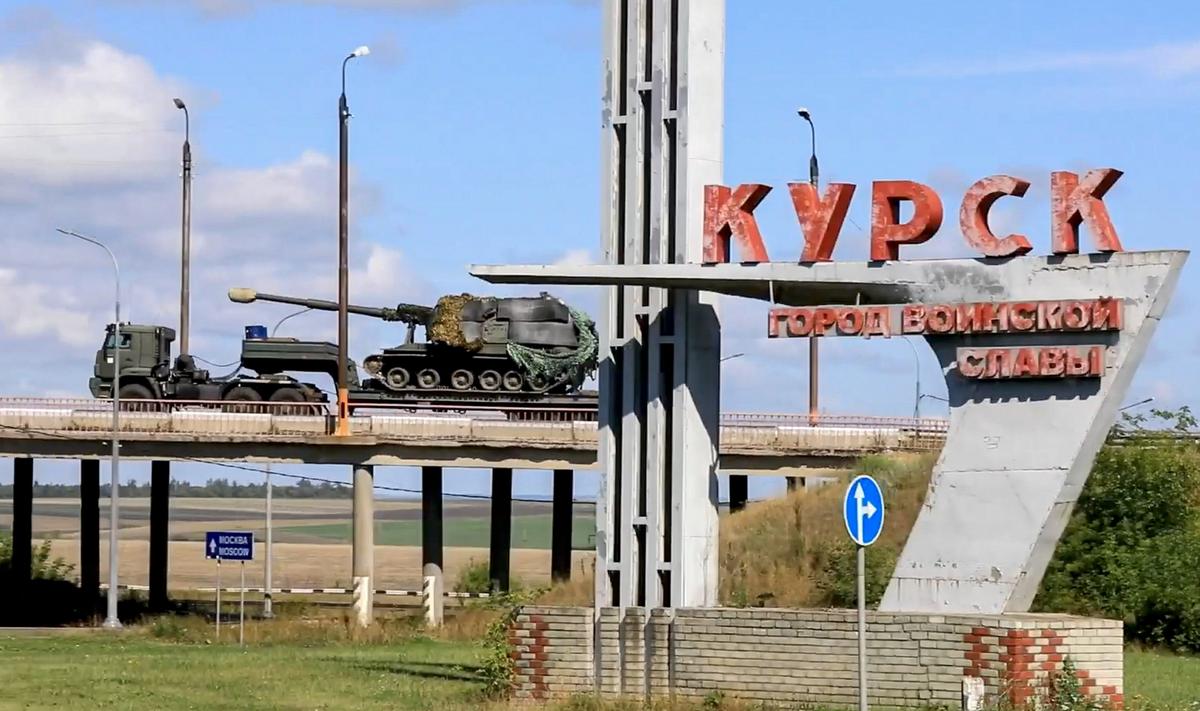
A Russian military convoy delivers military equipment to the Kursk region, Russia. Photo: EPA-EFE / RUSSIAN DEFENCE MINISTRY
The Armed Forces of Ukraine (AFU) are continuing their advance into Russia’s southwestern Kursk region, with officials in the Russian region saying on Sunday morning that Ukrainian reconnaissance groups had entered the Belovsky district, about 30 kilometres to the southeast of Sudzha, where fierce fighting has been reported for much of the past week.
Belovsky district head Nikolay Volobuev said that the situation was “stable but very tense” and urged the over 76,000 Kursk region residents who have already evacuated not to return for the time being. Acting Kursk Governor Alexey Smirnov confirmed that AFU troops had entered the Belovsky district on Saturday, but added that Russian forces had since “stabilised” the situation.
While the situation on the ground remains unclear, hostilities in the Kursk region show no sign of letting up, with multiple air-raid warnings issued for the region overnight. At least 13 people were injured in the regional capital Kursk when debris from an intercepted Ukrainian missile landed on a residential building, Smirnov wrote in the early hours of Sunday.
The Russian Defence Ministry continued posting footage of Russian troops destroying AFU equipment in the Kursk region on Sunday, adding that Russian troops had “thwarted” multiple Ukrainian drone strikes over the Kursk region as well as over the neighbouring Belgorod region.

A Russian military convoy delivers military equipment to the Kursk region, Russia. Photo: EPA-EFE / RUSSIAN DEFENCE MINISTRY
Addressing the incursion directly for the first time on Saturday, Ukrainian President Volodymyr Zelensky said that Ukraine’s “actions to push the war out into the aggressor’s territory” proved it really knew “how to restore justice” and that it was applying “exactly the kind of pressure that is needed — pressure on the aggressor”, though he avoided outlining the objectives of the unprecedented AFU incursion into Russian territory.
Meanwhile, the Belarusian Defence Ministry reported on Sunday that Belarus would send tanks to its border with Ukraine on the orders of Belarusian dictator Alexander Lukashenko, who said on Saturday that Belarus had intercepted several Ukrainian drones that violated the country’s airspace and vowed that no “provocation” would “go unanswered”.
Belarus sending arms to the border was simply an attempt to “divert the attention of Ukraine’s command”, the head of Ukraine’s Centre for Countering Disinformation, Andriy Kovalenko, said on Saturday.
Political analyst Dmitry Oreshkin told Novaya Europe on Saturday that Russia’s National Anti-Terrorism Committee declaring a “counter-terror operation” in the country’s western Kursk, Belgorod and Bryansk regions on Friday was a “forced” decision, which acknowledged the fact that hostilities had now reached Russian territory.
“This is very bad news for Putin,” Oreshkin said, adding that Russia’s inadequate response to the AFU border incursion raised questions about how seriously to take Putin’s threats of escalation should Russian territory be attacked.
“Putin no longer controls the situation. He can only try deploying more troops and attempting to recapture his lost territory,” Oreshkin added.
